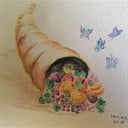What is another name for the 'Oil of Lebanon' that comes from Oman?
Also known as 'olibanum', the Oil of Lebanon is more commonly recognized by its western name, frankincense. The name originated from the Frankish (French) Knights of the Crusades who coveted it.
Frankincense is a well-known biblical ingredient and one of three gifts given by the Magi to the newborn Jesus. Throughout history, Frankincense has been one of the world's most treasured commodities. It is a milky-white resin produced by trees of the 'Boswellia' genus. Frankincense trees need an arid climate where they get moisture from the morning mist, such as in Oman, Yemen, India and Northern Africa.
Frankincense trees grow to about 20 feet (8m). In Oman, the trees produce small yellow-white flowers with five petals. Other species produce small pale-red flowers. The resin flows from the trunk of the tree when it is injured. The Arabic name for the resin is 'luban', which means 'white' or 'cream'.
To extract the resin, a tool called a mengaff is used to scrape about a five-inch section down the trunk of tree. The harvester returns later to scrape what has become hardened frankincense resin from the tree. The trees are usually harvested twice a year, once between January and March and again between August and October.
More Info:
www.google.com





